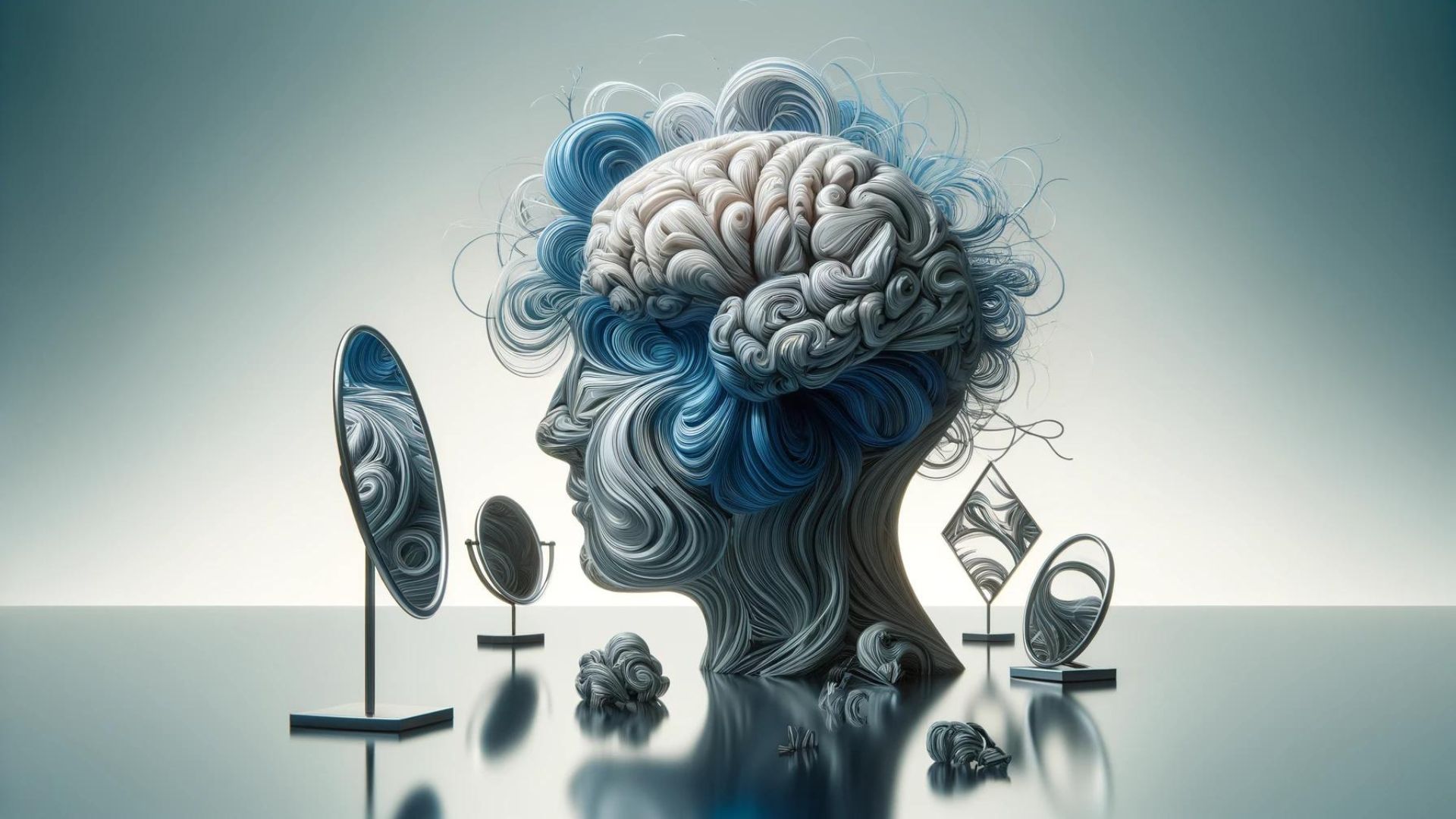Episode Audio
- Episode Audio
- Cognitive Biases Introduction
- Why should we learn about cognitive biases?:
- 1: Confirmation Bias – Why You Only Hear What You Want to Hear
- 2: Anchoring Bias – Are You Getting Hooked By the First Number?
- 3: Hindsight Bias – The “I Knew It All Along” Syndrome
- 4: Availability Heuristic – When Your Brain Tricks You with What’s Trending
- 5: The Dunning-Kruger Effect – When Ignorance and Confidence Collide
- 6: Status Quo Bias – Why Change is Scary (Even When It’s Good)
- 7: The Sunk Cost Fallacy – Don’t Throw Good Money After Bad
- 8: Overconfidence Bias – When Your Belief Outpaces Your Reality
- 9: The Framing Effect – When Words Shape Your World
- 10: Negativity Bias – Why Bad News Sticks Like Velcro
- 11: Self-Serving Bias – It’s Not Me, It’s the Universe!
- 12: The Bandwagon Effect – When “Everyone’s Doing It” is Your Brain’s Worst Excuse
- 13: Loss Aversion – Why Losing Hurts More Than Winning Feels Good
- 14: The Fundamental Attribution Error – Why We Judge Others Too Harshly (and Ourselves Too Softly)
- 15: Recency Bias – When the Latest News Isn’t Always Best
- 16: Projection Bias – Why It’s Hard to See the World Through Someone Else’s Eyes
- 17: False Consensus Effect – You’re Not as Popular as You Think
- 18: The Gambler’s Fallacy – Why Casinos Always Win
- 19: Optimism Bias – Why It Feels Good to Be Wrong (Sometimes)
- 20: In-Group Favoritism – Us vs. Them
- Wrapping Up: Understanding Your Mind for Smarter Choices
Cognitive Biases Introduction
Have you ever stubbornly dug your heels in, refusing to change your mind even when presented with new information? Or, have you made a big decision based on a hunch only to regret it later? How about those times you vividly remember something… and it turns out you were completely wrong?
If so, you’re not alone. All of us have experienced moments where our brains seem to work against us. It’s like there are hidden forces sabotaging our best attempts to be logical! The good news is, there’s a reason behind these mental mishaps. They’re called cognitive biases.
I’m your host, Danny, and I’m here to take you on an exciting journey into the fascinating world of your own mind. Cognitive biases are those subtle, sometimes sneaky, mental shortcuts that steer our thoughts and influence our actions. They’re why we can be so incredibly irrational even when we think we’re being smart.
In this series, we’re going to dive deep into some of the most common cognitive biases. We’ll uncover:
- Why you can’t stop clinging to that old, outdated belief, even though it’s been proven wrong
- How the first number you hear in a negotiation could cost you thousands of dollars.
- And whether you really should trust your memory of that wild party ten years ago…
Get ready to be a little baffled, and definitely learn a whole lot about how to overcome the quirks of your mind. It’s time to understand your biases, so they don’t end up driving you crazy. Let’s get started!
Why should we learn about cognitive biases?:
If you could have a superpower, what would it be? Flight? Super strength? Invisibility? While those would all be pretty cool, I’d argue there’s a superpower far more valuable, and one that’s within your grasp: understanding the way your own mind works.
Every day, we make countless decisions both big and small. We form opinions, navigate relationships, and make plans for the future. But what if I told you that there are hidden forces constantly influencing your thinking? These forces are called cognitive biases, and they’re like mental shortcuts that help our brains make sense of a crazy, complex world.
The thing is, these shortcuts often lead us astray. Biases can make us see the world inaccurately, make irrational decisions, and misunderstand the motivations of others. Think of them like glitches in your brain’s software, causing you to react and think in ways that don’t always make logical sense.
So, why should you care about cognitive biases? Because understanding them is the key to making smarter choices, avoiding costly mistakes, and becoming a more critical thinker.
Here are just a few reasons why learning about biases is so important:
- Know thyself. You can’t improve what you don’t understand. Learning about biases reveals the hidden forces shaping your thoughts and actions.
- Better decision-making. Biases can cloud our judgment. Recognizing them helps you make more rational and informed choices.
- Strengthen relationships. Biases can lead to misunderstanding and conflict in our interactions. Knowing them helps foster empathy and build better connections.
- Navigate a changing world. From news feeds to social media, we’re bombarded with information. Biases distort reality. Understanding them helps you sort fact from fiction.
Are you ready to unlock the superpower of understanding your own mind? Get ready, because we’re about to go on an adventure. Let’s explore the fascinating world of cognitive biases together!
1: Confirmation Bias – Why You Only Hear What You Want to Hear
Have you ever tried to convince a friend their favorite childhood movie is actually terrible? It probably went about as well as convincing a cat to wear a sweater. That’s because our brains are wired for a phenomenon called confirmation bias.
Confirmation bias is our tendency to favor information that confirms our existing beliefs and downplay or ignore evidence that contradicts them. Imagine you think your neighbor is a grumpy curmudgeon. Everything you see reinforces this belief. Maybe they never wave back, or they always seem to be yelling at their dog. However, you completely miss the times they’re helping someone carry groceries or laughing in their yard. Your brain filters out anything that doesn’t fit your existing grumpy neighbor theory.
This bias pops up everywhere.
- Politics Are you a die-hard supporter of a certain political party? Do you find yourself only reading news sources that align with your views, dismissing anything critical of your side? That’s confirmation bias at work.
- Shopping Let’s say you’re convinced a particular brand of skincare is the best. You probably seek out glowing reviews and before-and-after photos, ignoring any negative experiences or critical opinions.
- Memories Confirmation bias can even color our memories! If you had a negative experience with a person once, you might tend to recall future interactions with them as equally negative, forgetting any pleasant moments.
So, what can we do about this mental filter bubble we create for ourselves?
- Actively seek out opposing viewpoints. Don’t just stick to news sources or social media feeds that confirm what you already believe. Make an effort to understand the other side of the argument.
- Play devil’s advocate. Before completely dismissing information that contradicts your beliefs, try arguing in favor of it. This can help you identify weaknesses in your original thinking.
- Question your memory. Just because you remember something a certain way, doesn’t mean it’s entirely accurate. Could there be another perspective you’ve forgotten or overlooked?
Here are some questions to ponder:
- Can you think of a time when confirmation bias affected you?
- How can you be more open to considering evidence that contradicts your beliefs?
- What are some strategies you can use to seek out a more balanced perspective?
2: Anchoring Bias – Are You Getting Hooked By the First Number?
Have you ever walked into a negotiation feeling completely clueless about what to expect? Then the other person throws out a price or condition, and suddenly that number becomes your entire world. That’s anchoring bias in action.
Anchoring bias is our tendency to lock onto an initial piece of information (the anchor) and use it as our reference point for everything that follows. For example, imagine you’re shopping for a used car. The first price you see, even if ridiculous, sets the tone for the whole negotiation. Suddenly that too-high number seems like a bargain compared to the dealer’s inflated price tag. You might even be tricked into thinking you’re getting a real deal!
This bias isn’t just about money… think wages, time estimates, or even social situations. Let’s say you’re meeting someone new and they seem a little standoffish at first. That initial impression can anchor your whole perception, even if they warm up later.
So, how can you protect yourself from the sneaky power of the anchor?
- Do your research. Arm yourself with as much information as possible going into any situation where an anchor might be used. Know the real value of the car, the fair salary range, or the standard repair time.
- Set your own anchor. When negotiating, be the first to throw out a number. This helps shift the playing field in your favor.
- Question the anchor. Is the first piece of information offered truly relevant or accurate? Don’t let yourself get hooked before you assess its validity.
Before we go, ponder these questions:
- Have you ever been a victim of anchoring bias? How did it affect your decision-making?
- What are some situations where you might want to be extra vigilant of anchors?
- How can you use the power of the anchor to your own advantage?
3: Hindsight Bias – The “I Knew It All Along” Syndrome
Ever watched a football game and found yourself shouting, “Why would they call that play?! It was obviously going to fail!”? Or, let’s say a friend is going through a messy breakup. You think to yourself, “I saw that coming from a mile away”. That, my friend, is hindsight bias in action.
Hindsight bias, sometimes called the “I knew it all along” effect, is our tendency to see past events as way more predictable than they actually were. You see the outcome, and your brain automatically constructs a seemingly logical path leading right to it. The problem is, life rarely unfolds in such a predictable manner!
This can make us overconfident in our judgment and lead to some pretty harsh “I told you so” moments (even if we never actually said anything at the time). Sports fans are experts in this, blaming every bad play on the coach when, in reality, predicting the twists and turns of a game is near impossible. Hindsight bias also has more serious consequences, like when jurors look at a case after the fact and assume a defendant must have been guilty because of the outcome of a trial.
So, how do we lessen hindsight bias?
- Play devil’s advocate. Before jumping to conclusions, consider all the reasons the opposite outcome could have happened.
- Be humble. Remember, the future is unpredictable, and making absolute pronouncements can be a recipe for looking foolish later on.
- Learn from the past. Hindsight bias isn’t all bad. Use it to identify potential pitfalls and improve future decisions, but don’t beat yourself up for not being able to see the future.
Here’s some food for thought:
- When have you been a “victim” of hindsight bias?
- How can hindsight bias distort our memories and rewrite past events?
- Is there a way to use hindsight bias to our advantage without falling into its negative traps?
4: Availability Heuristic – When Your Brain Tricks You with What’s Trending
Imagine a plane crashes and it dominates the news cycle for weeks. Suddenly, you become terrified of flying, even though statistically it’s far safer than driving. That’s the availability heuristic at work.
The availability heuristic is a mental shortcut where we judge the likelihood of something by how easily examples come to mind. Vivid, emotionally charged events (like a plane crash), or things we’ve heard repeatedly, seem way more common and probable than they actually are. This is why fear-mongering media and repetitive advertising work – they flood your brain with easily recalled information that distorts your perception of reality.
This bias pops up everywhere:
- You might overestimate the danger of shark attacks because of terrifying movies like “Jaws”.
- You buy a lottery ticket because you know someone who won big, even though the odds are stacked against you.
- You choose a vacation destination based on your friend’s buzzing Instagram feed, forgetting that social media rarely shows the whole picture.
So, how do we combat the availability heuristic?
- Get the data. Seek out statistics and reliable sources to get a more accurate picture of probabilities.
- Step outside your bubble. Actively look for information that challenges your assumptions. Diverse sources give you a broader perspective.
- Question your memory. Just because something is easy to recall, doesn’t make it frequent or representative.
Let’s reflect:
- Can you think of a time when the availability heuristic impacted a decision you made?
- In what areas of your life might you be relying too much on what’s easily remembered?
- How can you actively seek out a more balanced and informed perspective?
5: The Dunning-Kruger Effect – When Ignorance and Confidence Collide
Have you ever encountered someone who was absolutely convinced of their expertise, but their advice was so off-base it made your head spin? You might be witnessing the Dunning-Kruger Effect in action.
The Dunning-Kruger Effect is a bizarre phenomenon where people who know the least about a subject often have the most inflated sense of their own competence. Think of the armchair politician who spouts uninformed opinions with extreme confidence, or that uncle who’s sure he could perform emergency surgery after watching a few YouTube videos.
Why does this happen? It’s a double-edged sword:
- A little knowledge goes a long way (in the wrong direction). When you first start learning something, a tiny bit of knowledge can lead to a massive confidence boost. You don’t yet realize the vastness of what you don’t know.
- You don’t know what you don’t know. Those with low competence lack the very skills needed to recognize their own incompetence. They don’t get the feedback that signals the need for improvement.
The Dunning-Kruger Effect isn’t about stupidity; it’s about the mismatch between competence and perceived competence. Sadly, it can lead to poor decision-making, refusing to listen to experts, and even dangerous situations when people drastically overestimate their abilities.
So, what’s the antidote?
- Embrace the learning curve. Recognize that expertise takes time and effort. Avoid early overconfidence.
- Stay humble. Be open to the idea that you might be wrong. Seek out feedback and listen to those with more experience.
- Develop metacognition. This means the ability to think about your own thinking. Ask yourself, “How do I know what I know?”
For your mindful moment:
- Have you ever fallen into the Dunning-Kruger trap? Don’t worry, we all have!
- Is there an area where you might need to pump the brakes on your confidence and do some more learning?
- How can you encourage those around you to question their own competence without being condescending?
Remember, a bit of self-doubt can be a powerful tool for growth. Stay curious, keep learning, and you might just avoid some truly cringe-worthy moments courtesy of the Dunning-Kruger Effect.
6: Status Quo Bias – Why Change is Scary (Even When It’s Good)
Do you find yourself sticking with the same brand of cereal year after year, even though there are dozens of exciting options at the grocery store? Maybe you keep using that outdated phone even though the battery barely lasts a day. That, my friend, is the status quo bias at play.
The status quo bias is our tendency to favor the current state of affairs, to resist change, and stick with what’s familiar. It’s a mental shortcut that keeps things predictable and comfortable, even if “comfortable” means missing out on potential improvements. Think of it as our brain’s built-in “better safe than sorry” alarm.
This bias shows up everywhere:
- You keep investing in a company with declining stock prices because “it’s what I’ve always done.”
- You’re hesitant to try a new restaurant because your usual order at the old place feels safe.
- You resist switching to a new gym routine even though you’ve plateaued in your fitness goals.
While the status quo bias can offer a sense of security, it can also hold us back from growth and new experiences.
So, how can we overcome our resistance to change?
- Acknowledge the bias. The first step is recognizing that your brain might be whispering sweet nothings about keeping things exactly the same.
- Identify the costs and benefits. Is the comfort of the familiar outweighing the potential rewards of change? Analyze the situation logically.
- Start small. Don’t overwhelm yourself with a complete overhaul. Make small, incremental changes to build momentum.
- Focus on the positive. Think about the exciting possibilities that change can bring. Visualize the improved future version of yourself.
Here’s a chance to reflect:
- Can you think of a time when the status quo bias held you back from something positive?
- What are some areas of your life where you could benefit from embracing change?
- How can you use the tips we discussed to overcome your resistance to the new and different?
7: The Sunk Cost Fallacy – Don’t Throw Good Money After Bad
Imagine you bought a ticket for a concert you’re no longer in the mood for. It’s pouring rain, and you’d honestly rather crawl under a blanket with a good book. But you think, “I paid for it, I have to go”. That’s the sunk cost fallacy in action.
The sunk cost fallacy is our tendency to continue pouring resources (time, money, energy) into something simply because we’ve already invested in it, even if the current costs outweigh the potential benefits. It’s that voice in your head that says, “You’ve come this far, you can’t quit now!”
Here’s where things get tricky:
- Sunk costs are irrelevant. They are gone, spent, in the past. The only thing that matters is whether continuing is worth it based on the present situation.
- We hate to feel wasteful. Abandoning something feels like throwing that initial investment away, even though it’s long gone.
- Loss aversion is powerful. We are wired to avoid losses more than seek out gains. Sometimes continuing a losing battle is driven by a gut feeling, not a logical choice.
This fallacy has a wide range of consequences:
- Staying in a toxic relationship way too long because of “all the years wasted”
- Continuing a failing business project because of the funds spent so far
- Eating a terrible meal simply because you paid for it
How can you avoid getting trapped by sunk costs?
- Focus on the future. Ask yourself, “If I wasn’t already invested, would I choose to start this now?”
- Cut your losses. Sometimes the smartest move is to walk away and reinvest your resources into something more worthwhile.
- Reframe the cost. Consider those past expenses a learning experience, not a burden that dictates your future.
Let’s think:
- Can you recall a recent (or past) time where the sunk cost fallacy influenced your decisions?
- How can you remind yourself that past investment shouldn’t determine future choices?
- What’s one area where you can be more willing to walk away from something that’s no longer serving you?
8: Overconfidence Bias – When Your Belief Outpaces Your Reality
Imagine you’re taking a multiple-choice test and feel absolutely certain about your answers. But when the results come back, you’ve bombed it. Sound familiar? That might be a classic case of overconfidence bias.
Overconfidence bias is the tendency to have way more faith in our knowledge, abilities, and judgment than is objectively warranted. We might overestimate our chances of success while underestimating the risks and challenges. It’s that feeling of “I got this!” that can sometimes lead us right into trouble.
Here’s why our brains are wired for overconfidence:
- We want to feel good. It’s an ego boost to believe we’re capable and smart.
- Confirmation bias at work. We focus on evidence that supports our beliefs and ignore anything that contradicts them.
- Limited experience. The less we know about something, the easier it can be to overestimate ourselves (see the Dunning-Kruger Effect).
Overconfidence bias leads to all sorts of problems:
- Investors making reckless trades because they’re convinced they know the market
- People starting businesses without proper planning, assuming success is a given
- Underestimating how much time a project will take (hello, every home renovation ever!)
Okay, so how do we deflate our overinflated egos a bit?
- Get feedback. Seek out external evaluations and don’t dismiss criticism.
- Look at the track record. Have you been as accurate in the past as you think?
- Keep learning. The more you know, the more aware you become of what you don’t know, which can foster a healthy dose of self-doubt.
Ponder these questions:
- In what areas of your life are you prone to a little too much overconfidence?
- Can you think of a time when being overly confident backfired?
- How can you build in reality checks to keep your confidence in line with your abilities?
Remember, confidence is a fantastic thing, but unchecked it can lead to some serious missteps.
9: The Framing Effect – When Words Shape Your World
Imagine two surgeons explain a risky procedure. Surgeon A says, “There’s a 90% survival rate.” Surgeon B says, “There’s a 10% mortality rate.” Even though the stats are identical, most of us would feel more confident with Surgeon A. That’s the framing effect in action!
The framing effect is all about how the way information is presented (the frame) drastically changes our perception of it. Think about these scenarios:
- A ground beef package labeled “80% lean” sounds healthier than one labeled “20% fat” even though they’re the same.
- A politician advocating “welfare reform” gets more support than one promoting “aid to the poor” …it’s the same policy, different spin.
- You’re more likely to take a gamble when the outcome is framed as a potential gain rather than a potential loss.
The framing effect works because:
- Words carry emotional weight. “Lean” has positive connotations, “fat” is seen negatively. Certain words trigger immediate gut reactions.
- We seek gains and avoid losses. We’re instinctively motivated by the promise of something positive or the fear of missing out.
- Mental shortcuts. Our brains love efficiency. We often accept information based on the initial presentation without deeper analysis.
How do we protect ourselves from the framing effect?
- Look beyond the spin. Analyze the facts beneath the presentation. Are statistics or data being twisted to fit a narrative?
- Consider alternative framing. Reframe the information in a different way. Would your perception change if it was presented with a focus on losses instead of gains, or vice versa?
- Be mindful of your own language. The way you frame things shapes how others will perceive them.
Here’s your mindful challenge:
- Pay attention to how advertising, news articles, and even conversations are framed. Can you spot subtle attempts to sway your opinion?
- Can you think of a time the framing effect influenced your decision-making?
- How can you harness the power of framing to your own advantage while remaining ethical?
10: Negativity Bias – Why Bad News Sticks Like Velcro
Ever notice how a single rude comment can ruin your entire day? Or maybe one bad review can make you question your entire career? That’s negativity bias, and it’s hardwired into our brains.
Negativity bias is the tendency for negative experiences, thoughts, and emotions to leave a much stronger imprint on our minds than positive ones. Think of it like this: positive experiences are like water on a Teflon pan, while negative experiences are like Velcro – they just cling!
Why is our brain so drawn to the dark side? There’s an evolutionary reason:
- Survival mechanism. In the past, spotting danger was crucial. Those hyper-focused on threats lived longer to pass on their genes.
- Our brains love learning. Negative events often carry valuable lessons about avoiding future risks.
- The social factor. Bad gossip is juicier and spreads faster. Our ancestors relied on this kind of information to navigate complex social groups.
Negativity bias shows up everywhere:
- We remember insults more vividly than compliments.
- Dwelling on a single mistake after an otherwise great performance.
- News headlines prioritize fear-mongering and negative events.
How can we combat this negativity bias?
- The power of positivity. Be intentional about seeking out and savoring positive experiences. Gratitude practice is a great tool for this.
- Reframe negative events. Can you find a lesson or an opportunity for growth in a bad situation?
- Media mindfulness. Be aware of the constant flow of negativity in the news and social media. Limit exposure when needed.
Let’s reflect on this:
- How has negativity bias shown up in your own life?
- What are some strategies you use to manage negative thoughts and experiences?
- How can you be more intentional about creating positive experiences to balance the scales?
Remember, while we can’t escape negativity bias completely, being aware of it is the first step toward a more balanced and optimistic outlook.
11: Self-Serving Bias – It’s Not Me, It’s the Universe!
Imagine you ace a job interview. You think, “Nailed it! I’m brilliant and charming.” But, if you don’t get the job, it’s obviously because the interviewer was incompetent. That, friends, is the self-serving bias in its purest form.
The self-serving bias is our tendency to take all the credit for our successes while conveniently blaming outside forces for our failures. Let’s break down why we’re wired this way:
- Ego protection. Accepting full responsibility for the bad stuff hurts! Our brains want to maintain a positive self-image.
- Confirmation bias at work (again!). We seek evidence that confirms our awesomeness and ignore anything that challenges it.
- Control is an illusion. It’s way more comforting to believe negative outcomes are beyond our control instead of grappling with flaws.
Here’s where this bias gets messy:
- We see ourselves as ‘victims’ of circumstance, avoiding responsibility for our shortcomings.
- We might not learn and grow from difficult experiences if we’re not taking ownership.
- It can damage relationships when we never take the blame for anything.
So, how do we turn off this self-preservation autopilot?
- Get real. Play devil’s advocate when things go wrong. Did you play any role in the outcome?
- Praise is not always evidence. If everyone praises your work constantly, maybe your standards aren’t high enough.
- Flip the script. When something goes well, consider the external factors that contributed (lucky breaks, helpful colleagues).
Here are some thought-provoking questions:
- Can you recall a specific time when the self-serving bias kicked in to protect your ego?
- How can owning up to your mistakes, even partially, open doors for growth?
- How can you be more gracious in victory and remember the team effort behind your success?
12: The Bandwagon Effect – When “Everyone’s Doing It” is Your Brain’s Worst Excuse
Have you ever bought something you didn’t really need just because it was super trendy? Or found yourself suddenly liking a song you initially hated after hearing it everywhere? That’s the bandwagon effect in action.
The bandwagon effect is our brain’s tendency to follow the crowd. We see others doing or believing something, and a powerful instinct tells us to hop on board. There’s a few reasons our brains give into this social pressure:
- Safety in numbers. Evolutionarily, there was often safety in sticking with the group. If everyone’s eating a certain berry, it’s probably not poisonous.
- Fear of missing out (FOMO). Being the lone outsider isn’t fun. We want to belong and feel included.
- Mental shortcuts. It’s easier to assume “so many people can’t be wrong” than to do our own research and form an independent opinion.
The bandwagon effect is everywhere:
- Fashion trends that defy logic (hello, low-rise jeans comeback!)
- Viral social media challenges that spread like wildfire
- Investors piling into a hot stock based on hype rather than fundamentals
- Political opinions swaying simply due to popularity
How do we protect ourselves from blindly leaping onto bandwagons?
- Be a critical thinker. Just because the crowd is doing it, doesn’t mean it’s right…or even right for you.
- Seek out diverse opinions. Exposing yourself to differing viewpoints can weaken the pull of the majority.
- Embrace individuality. Remind yourself that it’s okay (and pretty cool) to march to the beat of your own drum.
Questions to ponder:
- Can you think of a time you fell for the bandwagon effect? Did you regret it later?
- In what areas of your life do you tend to follow the crowd? Where could you benefit from more independent thinking?
- How could you actively cultivate opinions that go against the popular narrative?
Remember, the hottest trends and majority opinions aren’t always the best ones.
13: Loss Aversion – Why Losing Hurts More Than Winning Feels Good
Imagine you find a twenty-dollar bill on the sidewalk. Great, right? But what if you then lose your twenty-dollar wallet? The sting of losing feels much worse than the joy of finding, even though the amounts are identical. That’s loss aversion in action.
Loss aversion is a fundamental principle of behavioral economics that describes our tendency to feel the pain of losing something much more intensely than the pleasure of gaining something of equal value. Psychologists estimate that losses can feel psychologically twice as powerful as gains.
Here’s what’s going on in our brains:
- Evolutionary roots. Avoiding losses was crucial for survival in the past. Our ancestors who were more sensitive to potential threats and losses lived longer to reproduce.
- Prospect theory. This theory suggests that our perception of value isn’t linear, but rather follows a S-shaped curve. Losses loom much larger than gains.
- Emotions play a role. The negative emotions associated with losing (sadness, anger, regret) are simply more powerful than the positive emotions we feel when we gain (happiness, satisfaction).
Loss aversion shows up in many ways:
- Risk-averse behavior in financial decisions. We might stick with safe investments for fear of losing money, even if it means lower potential returns.
- Holding onto bad relationships because the fear of being alone feels worse than the unhappiness in the present situation.
- Placing a higher value on objects we already own simply because we don’t want to lose them.
So, how can we make smarter decisions despite loss aversion?
- Be aware of the bias. Recognizing its influence is the first step towards mitigating its effects.
- Focus on the potential gains. Don’t just dwell on the risks of losing. Visualize the positive outcomes too.
- Frame things positively. When making a choice, present options in terms of what you could gain rather than what you might lose.
Let’s reflect:
- Can you recall a recent situation where loss aversion impacted your decision making?
- How can you be more mindful of the emotional weight of losses when making choices?
- Are there areas in your life where you can reframe a situation to focus on potential gains rather than dwelling on possible losses?
14: The Fundamental Attribution Error – Why We Judge Others Too Harshly (and Ourselves Too Softly)
Have you ever witnessed someone cut you off in traffic and immediately labelled them a “jerky driver”? Or maybe a co-worker misses a deadline and you think they’re just “lazy.” That’s the fundamental attribution error at play!
The fundamental attribution error is our tendency to overemphasize internal, personal factors (like personality traits) to explain the behavior of others, while underestimating the impact of external, situational factors. In other words, we see our own actions as products of circumstance, but judge others based on their character.
Here’s why this bias exists:
- Limited information. We often lack insight into the situations that drive other people’s actions. We see the behavior, not the why behind it.
- The spotlight effect. We tend to overestimate how much attention our own actions receive, assuming everyone notices our slip-ups (when in reality, most people are focused on themselves).
- Egocentric thinking. It’s easier to understand the world through the lens of our own experiences and biases.
This bias can lead to some serious problems:
- Unfair judgments. We might make harsh assumptions about people based on limited information.
- Strained relationships. Misunderstandings and hurt feelings can arise when intentions are misinterpreted.
- Difficulty offering constructive criticism. Focusing on personality makes feedback personal and offensive.
How can we overcome the fundamental attribution error?
- Consider the situation. Ask yourself, “What might be going on in this person’s life that could be influencing their behavior?”
- Seek additional information. Don’t jump to conclusions. Try to understand the context before making a judgment.
- Focus on the behavior, not the person. Separate the action from the character. People can make mistakes without being bad people.
- Embrace self-awareness. Be mindful of how you explain your own actions and those of others.
Let’s get reflective:
- Can you remember a time when you fell victim to the fundamental attribution error?
- How can you be more understanding of the situations others might be facing?
- How can you offer criticism in a way that focuses on the behavior and not the person?
By recognizing this bias, we can approach the world with a more balanced perspective.
15: Recency Bias – When the Latest News Isn’t Always Best
Picture this: your boss has been consistently giving you positive feedback all year. Then, you make one minor mistake and they express a bit of disappointment. Suddenly, that single negative comment outweighs months of praise. That’s recency bias in action.
Recency bias is our tendency to put greater emphasis on the most recent events or information we encounter, often causing us to discount or even forget about earlier experiences. Here’s why our brains work this way:
- The memory factor. It’s way easier to remember recent events! They’re fresher and more vivid in our minds.
- Mental shortcuts. Our brains love efficiency. Favoring the newest information reduces the cognitive load involved in making decisions.
- Our love of a good story. Recent events often feel more relevant and representative of a current pattern, tempting us to ignore the bigger picture.
Recency bias leads to all sorts of problems:
- Investors chase hot stocks based on recent gains, ignoring the company’s longer-term performance history.
- We might overreact to a single customer service complaint, even if our overall record is excellent.
- Performance reviews get skewed by focusing on what happened last week instead of the whole year’s work.
How do we keep things in perspective?
- Take notes and keep records. Documenting successes and setbacks over time can counteract the pull of the immediate.
- Consciously seek out the historical context. Before making a judgment, ask: “How does this fit into the broader picture?”
- Don’t make rash decisions. Let emotions settle after a recent negative. Gain some distance before finalizing your evaluation.
Time for self-reflection:
- Can you recall a time when recency bias clouded your judgment?
- How can you incorporate tools and practices to ensure a more balanced, long-term perspective?
- In what areas of your life is it most crucial to avoid fixating on recent events?
Remember, the present moment is just a tiny dot on the timeline of our lives and experiences.
16: Projection Bias – Why It’s Hard to See the World Through Someone Else’s Eyes
Have you ever been completely baffled by someone’s opinion on a topic? Or, perhaps felt so certain about a decision, assuming everyone would naturally agree? You might have been a victim of projection bias.
Projection bias is our tendency to assume others share our thoughts, feelings, and values. It’s basically like looking at the world through a filter and believing everyone else sees the same colors. It’s driven by a few key factors:
- Our own experience is all we know. It’s natural to use our personal lens to make sense of the world and how others must perceive it too.
- Mental shortcuts. Our brains love efficiency. Assuming similarity in others is less mentally taxing than considering various, nuanced viewpoints.
- Ego boost. Thinking others agree with us can be a form of validation, strengthening our own beliefs.
This bias can be sneaky in many ways:
- Political debates where both sides think the other is insane – we assume their values align with our own.
- Misunderstandings in relationships when we project our own needs and desires onto our partner.
- Marketers who overestimate how much people will like their product, assuming shared taste.
So, how can we open our minds to different perspectives?
- Recognize the bias. Just knowing this exists helps us question our assumptions.
- Seek out diversity. Interact with people of different backgrounds and belief systems. It pops our filter bubble!
- Practice active listening. Focus on truly understanding the other person’s viewpoint instead of judging or forming counterarguments.
- Ask open-ended questions. Discover someone’s unique perspective by prompting them to elaborate.
Here are some thought starters:
- Can you think of a time when projection bias led to a misunderstanding?
- What are some areas where you might be underestimating how different someone’s way of thinking might be?
- How can you cultivate a genuine curiosity about diverse viewpoints?
17: False Consensus Effect – You’re Not as Popular as You Think
Imagine you’re obsessed with a truly obscure band. You’re convinced everyone you know must secretly love them too. That’s the false consensus effect at work!
The false consensus effect is the tendency to overestimate how common our own beliefs, opinions, and preferences are. We assume others see the world the same way we do, inflating our sense of agreement and belonging. This bias happens for a few reasons:
- Our social circle is a mirror. The people we hang out with likely share some similarities with us – reinforcing our beliefs.
- Availability heuristic in action. We readily remember examples of people who agree with us, making it feel more common.
- We desire agreement. Feeling understood and validated is comforting. It hurts when people disagree!
Here’s where things get messy:
- We misjudge public opinion on hot-button topics, getting shocked when our views aren’t the majority.
- We might become less open-minded, assuming our beliefs are so ‘obvious’ that anyone who disagrees is just wrong.
- It can lead to reckless decisions, since overestimating support can make risky choices seem less dangerous.
How do we keep our egos in check?
- Get out of your bubble. Expose yourself to diverse viewpoints and actively seek out people who think differently.
- Remember those silent dissenters. Not everyone who disagrees with you will feel comfortable voicing their opinion.
- Data beats anecdotes. Look for statistics and concrete evidence to get a more accurate picture of consensus.
Let’s reflect:
- Can you recall a time when you were surprised to find out your opinion was less common than you believed?
- How does this bias potentially influence online conversations and debates?
- What strategies can you employ to recognize diverse perspectives and avoid assuming everyone agrees with you?
Remember, our individual worldviews are tiny slices of the full picture. True understanding lies in recognizing the rich tapestry of different opinions and experiences.
18: The Gambler’s Fallacy – Why Casinos Always Win
Imagine you’re at the roulette table, and red has come up five times in a row. You confidently bet on black, because surely it’s due for a win! This is the gambler’s fallacy in action.
The gambler’s fallacy is the mistaken belief that if something has happened more frequently than expected recently, it’s less likely to happen in the future. The opposite is also true: believing that if something hasn’t happened in a while, it’s got to happen soon.
So, why do our brains trick us like this? Here’s the breakdown:
- Misunderstanding randomness. We intuitively want to find patterns, even when none exist. Truly random events have no memory of the past.
- Seeking control. In a chaotic world, this fallacy gives an illusion of being able to predict the unpredictable.
- Emotional reactions. After a losing streak, the desperation to recoup and avoid further loss fuels faulty reasoning.
The gambler’s fallacy pops up everywhere:
- A couple believing they are more likely to have a girl after several boys. (Each conception is independent!)
- Stock traders selling after a dip, expecting it to go even lower, missing out on a rebound.
- That feeling that you’re “due” for a bit of good luck after a streak of misfortunes.
How do we combat this deceptive intuition?
- Remember, randomness reigns. Each coin flip, dice roll, lottery draw is a fresh start with the same odds – the past doesn’t matter.
- Understand probability. Focus on the long-term averages, not recent trends, when making decisions.
- Beware of emotions driving your reasoning. Step back when you feel desperate to “fix” a losing streak.
Time for reflection:
- Have you ever fallen for the gambler’s fallacy? Did it go as badly as you might expect?
- How can you remind yourself that independent events don’t care about what happened before?
- How can understanding the gambler’s fallacy help you make more rational choices in various life situations?
Remember, the world is often unpredictable. Recognizing this bias can help you navigate those uncertain moments with less frustration and more level-headed decision-making.
19: Optimism Bias – Why It Feels Good to Be Wrong (Sometimes)
Ever thought, “Sure, bad things happen, but not to me!” That, my friend, is optimism bias whispering sweet nothings into your ear.
Optimism bias is the tendency to overestimate the likelihood of experiencing positive events while underestimating our chances of encountering negative ones. Think of it as wearing rose-colored glasses, filtering out life’s potential downers.
Why are we wired this way? Here’s a few factors:
- Mental health boost: Optimism feels good and reduces stress. This confidence can fuel motivation and help us tackle challenges.
- Illusion of control: Believing we’re less susceptible to risks gives us a sense of control over our lives.
- Evolutionary roots: Some degree of optimism likely helped our ancestors persevere through hardship.
However, too much optimism can trip us up:
- We might make reckless decisions because we underestimate potential risks.
- Failure can hit us harder if we didn’t adequately prepare for potential setbacks.
- Underestimating the likelihood of illness can lead to neglecting healthy habits.
So, how do we find a balance?
- Recognize the bias. Remember, even the most optimistic person isn’t immune to misfortune.
- Hope for the best, plan for the worst. Optimism is powerful when paired with realistic planning for possible challenges.
- Selective optimism. Maybe a bit of pessimism is helpful when it comes to things like finances or health prevention.
Let’s reflect:
- Can you think of a time when optimism bias worked in your favor? How about a time when it led you astray?
- In what areas of your life do you tend to be the most optimistic? Are there places where some healthy pessimism might be useful?
- How can you harness the power of optimism while still being realistic about potential challenges?
20: In-Group Favoritism – Us vs. Them
We all belong to groups – families, sports teams, social clubs, even fandoms. And guess what? We naturally tend to favor those we consider part of our “in-group.” That’s in-group favoritism in action!
In-group favoritism is the tendency to prefer members of our own groups over those from outside groups (the “out-group”). It’s a deep-seated bias that shows up in countless ways:
- Cheering for your hometown team, even if they’re not the best.
- Hiring someone from your alma mater.
- Feeling a sense of camaraderie with strangers who wear the same sports jersey.
So, why do we have this bias? There are a few evolutionary explanations:
- Strength in numbers. Early humans relied on their tribes for survival. Favoring the in-group increased the chances of the group’s success.
- Shared identity. Feeling a connection to others who share our values and experiences fosters cooperation and trust.
- Competition for resources. Limited resources throughout history may have led to competition between groups, making in-group loyalty even more crucial.
But in-group favoritism can also have negative consequences:
- Prejudice and discrimination. It can lead to unfair treatment of those perceived as outsiders.
- Group conflict and violence. Us vs. them mentality can escalate into hostility and even war.
- Missed opportunities. We might overlook talented people simply because they’re not part of our in-group.
How can we overcome this bias?
- Be mindful of your thinking. Recognize when in-group favoritism might be influencing your decisions.
- Seek out diverse perspectives. Interact with people from different backgrounds and challenge your own assumptions.
- Focus on commonalities. Remember that despite our differences, we all share basic human needs and desires.
Let’s get reflective:
- Can you recall a time when you witnessed or experienced in-group favoritism?
- How can you challenge your own assumptions about people from different groups?
- In what areas of your life can you be more intentional about fostering inclusion and celebrating diversity?
Remember, a strong sense of belonging is important, but it shouldn’t come at the expense of excluding others. By recognizing in-group favoritism and promoting inclusivity, we can create a more connected and harmonious world.
Wrapping Up: Understanding Your Mind for Smarter Choices
Throughout this audio series, we’ve taken a deep dive into the marvelous, messy world of cognitive biases. We’ve learned about the hidden forces that shape our thoughts, from the ever-present confirmation bias to the subtle dangers of in-group favoritism.
But why bother learning about all these mental glitches? Here’s the thing: understanding your biases is a superpower! Here’s why:
- Smarter decisions: Recognizing when your brain may be taking shortcuts helps you make more rational and informed choices.
- Improved relationships: Identifying biases like the fundamental attribution error can foster greater empathy and understanding in your interactions with others.
- Personal growth: Challenging your assumptions and beliefs is essential for growth. Learning about biases encourages critical thinking and open-mindedness.
- A kinder world: Awareness of how biases contribute to prejudice and discrimination motivates us to create a more just and inclusive society.
This is not about getting rid of your biases entirely (that’s impossible!) It’s about becoming a mindful observer of your own thought patterns. Here’s how to keep up the good work:
- Keep a “bias journal.” Jot down moments when you suspect a bias might have influenced your thinking. Reflect on how you might react differently in the future.
- Challenge your beliefs. Seek out alternative viewpoints and consider information that contradicts your existing opinions.
- Practice empathy. Before judging others, try to imagine the situation from their perspective.
Remember, our brains are amazing learning machines. The journey of self-discovery never truly ends. The more we understand about our own minds, the better equipped we are to navigate the complexities of life with wisdom, compassion, and a healthy dose of humor for our human quirks.
Thank you for joining me on this exploration of cognitive biases! I hope this series has sparked curiosity, sparked self-reflection, and maybe even a few laughs along the way. Until next time, keep questioning, keep learning, and keep those beautiful brains of yours working their best!










0 Comments